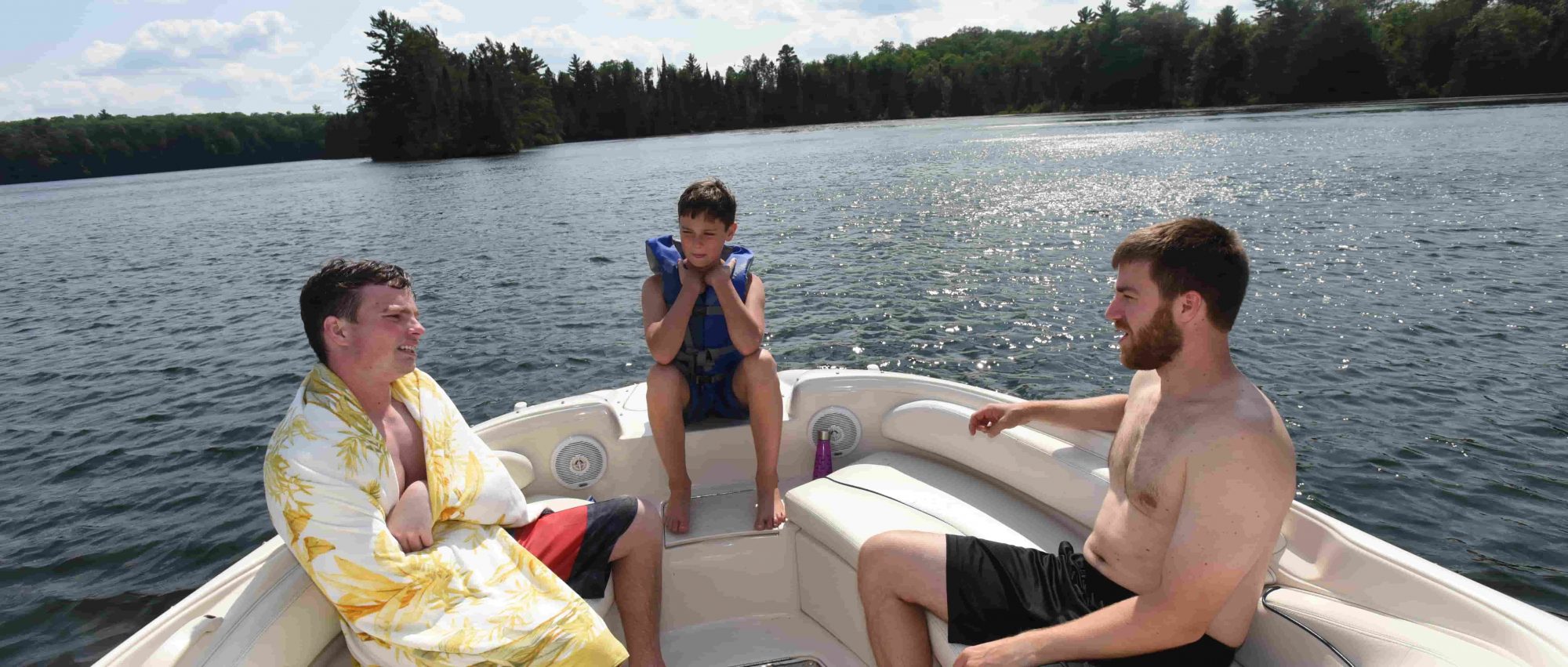
Clean Boats Clean Water Program Overview
July 26, 2018
You may be one of thousands of Wisconsinites to be greeted by watercraft inspectors at boat landings around the state, who will be sharing a simple but powerful message: you have the power to protect our waters from aquatic invasive species (AIS)!
Inspecting watercraft for invasive species offers a front line defense at the lake landing to prevent further destruction of lake ecosystems. Watercraft inspections are designed to increase public awareness about invasive species and to assist boaters in taking preventative steps to avoid further spreading of “critters”.
Invasive plants and animals, like Eurasian watermilfoil, spiny water fleas, and zebra mussels, pose great risks to the health of our lakes and fisheries. These species spread easily by hitching a ride on boats and other equipment, including trailers, anchors, live wells, buckets and bilges. However, boaters can easily prevent this by taking the following simple steps every time they enter and leave both public and private boat landings:
- Inspect your boat, trailer and equipment
- Remove all attached plants or animals
- Drain all water from boats, motors, live wells and other equipment
- Never move live fish away from a water body
- Dispose of unwanted bait in the trash
- Buy minnows from a Wisconsin bait dealer, and use leftover minnows only if you will be using them on that same water body or if no lake or river water or other fish have been added to the container.
In addition, following these steps help boaters comply with Wisconsin state law, which prohibits the transport of AIS.
The Clean Boats – Clean Waters program (CBCW) in existence since 2003, is a cooperative effort of the Wisconsin Department of Natural Resources, the University of Wisconsin – Extension, cooperative entities, such as local governments and lake districts, and environmentally aware volunteers. Through “Clean Boats, Clean Waters,” inspectors are trained to organize and conduct a watercraft inspection and education program in their community.
The program works to prevent the introduction and spread of invasive species. Invasive species are non-native plants, animals and pathogens that may cause economic, environmental and recreational harm, or affect human health. Not all non-native species are considered invasive. To be an invasive species there are none or few natural mechanism to keep the species in check and create a balance. This allows the invasive species to overrun an environment and crowd out natural species and cause serious long term issues.
The key methods that have been identified that allow invasive species into the State’s waters are:
- Boaters
- Anglers
- Other water users (sea planes, SCUBA, etc)
- Water garden & aquarium owners
- Natural dispersal
The Top Two methods of invasive species introduction into waterways are the program targets of the Clean Boats – Clean Waters program. These two categories account for over 93% of aquatic invasive movement. For example:
- Aquatic plants, such as Eurasian Milfoil which can be carried on boats, motors and trailers from waterway to waterway;
- Tiny organisms often too small to detect visually, such as spiny water flea eggs, are being spread in on-board water and on muddy anchors. Five nearby lakes (Stormy, Star, Trout, Ike Walton, and Butternut) are known to be populated with spiny water fleas. WI laws require that boats be thoroughly drained every time they are removed from a water body.
- Anglers may spread invasives by using non-native baits, such as rusty crawfish or diseased minnows that spread Viral Hemorrhagic Septicemia.
While the remaining three methods can and do transmit invasive species, their numbers and threat value is minimal when compared to the top two.
There can be other value added benefits of the Clean Boats – Clean Waters program. For example, with the face to face contact provided by Clean Boats – Clean Waters inspectors an opportunity arises for the promotion of other programs such as distribution of boating safety and other materials which serve the public interest.
The Clean Boats – Clean Waters program does not guarantee that an invasive will not be introduced into any given environment. But by intercepting new or additional introductions of invasives; other programs, such as chemical treatment or harvesting of invasive aquatic plants, may be made more effective or even reduce the need for these more expensive control methods.
The potential cost benefit ratio for Clean Boats – Clean Waters program when compared to other control and containment mechanisms is highly favorable.
CBCW also has lasting effects through its education efforts that have a value added effect that can strengthen overall partnership activities between supporting entities and individuals. Young people, residents, and visitors learn about invasives, boating, and many other aspects of their lake environment.
